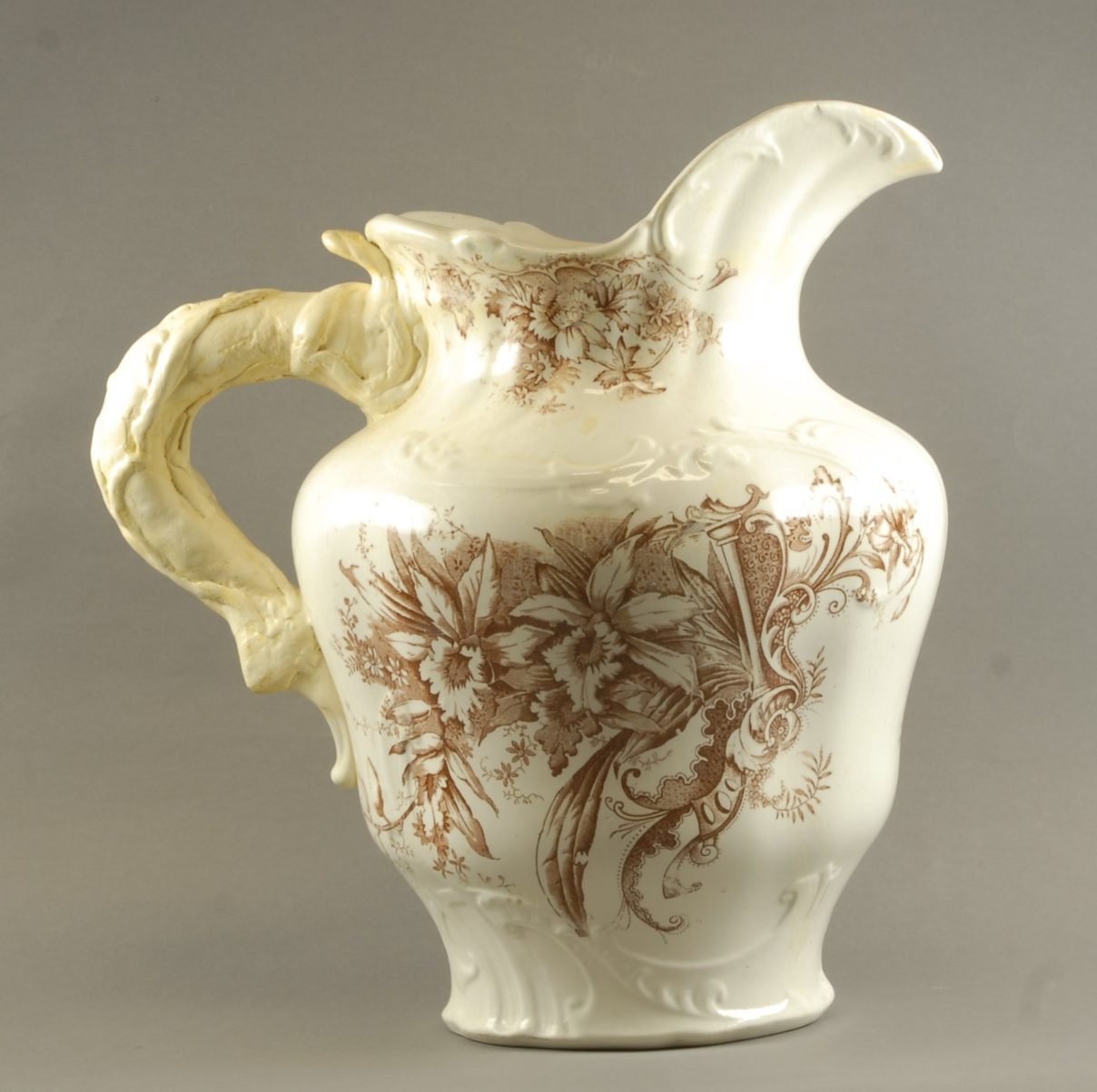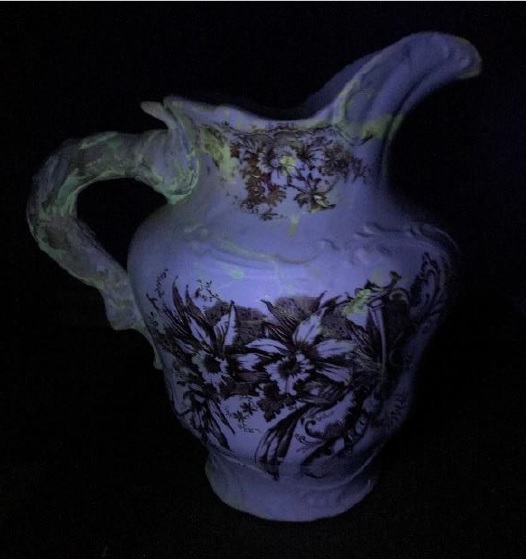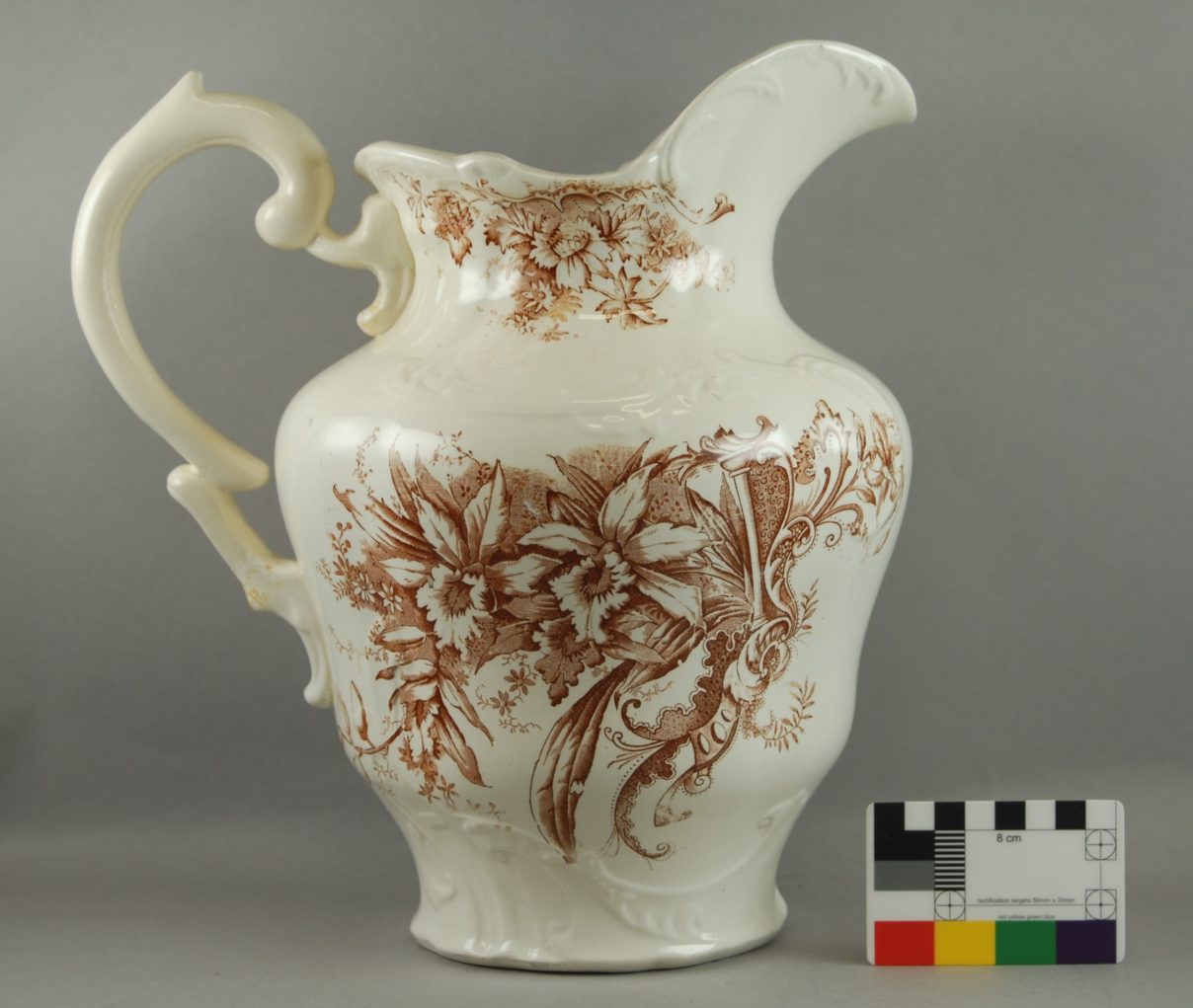June ’22
Ewer
The object is a cream earthenware ewer made by the Grimwade Brothers and forms part of the collections at Kiplin Hall in North Yorkshire.

The Grimwade Brothers established their Winton Pottery (stoke) in 1886. They manufactured a wide range of decorative and practical earthenware products. Their style developed throughout the late 19th century. Grimwade was founded by Leonard Lumsden Grimwade who began his career as a dry salter in Ipswich but moved to the Potteries as a modeller. He had a talent for modelling pottery so began by opening a small business in 1885. As the business developed his brother, Sidney Richard joined him. By 1890 the pair had purchased showrooms in both London and Stoke-on-Trent. In 1900 they became Grimwade Ltd. By 1906 there were four factories in operation under the company name Grimwade Ltd.
Leonard began to experiment with new printing techniques on the earthenware. He pioneered the lithographic transfer method which allowed the company to decorate their pots more efficiently.
In 1928 the first Royal Winton pattern was produced, including their new chintz designs for which the pottery became famous, and they officially changed their name to ‘Royal Winton’ in 1930.
Condition
- There is an old handle restoration which is not in keeping with the rest of the ewer
- There is evidence of excess paint on the surface of the ewer
- Signs of general museum dust and dirt on the surface and interior.
Conservation
In order to remove the thicker areas of paint from the surface of the ewer, a scalpel was used to gently pry them from the surface. The thinner areas of paint were then removed using cotton wool swabs with deionised water as this would not damage the surface.

In order to dismantle the previous handle restoration, removal was attempted by applying appropriate solvent poultices directly to the join and wrapping them in film in order to slow down evaporation of the solvent. This was successful at softening the join, but didn’t completely remove it. As such, mechanical methods were employed as well and a scalpel was used to carefully remove the restoration material at the join edges. Once enough of the old restoration material could be removed, the handle could be detached.
The break edges of the original handle were cleaned using cotton wool swabs with a suitable solvent in order to remove the remaining old restoration material. A new handle was then designed using examples from similar Grimwade Brothers ewers. The replacement handle was freehand carved in plasticine using reference images and what remained of the existing handle as a guide.

The plasticine handle was added to the ewer and smoothed at the join edges to create a more natural join. The modelled handle was held in place using a combination of plastazote and electrical tape and allowed to harden in the fridge for 24 hours.
Once hardened a two piece mould was made using siligum and a cast was made using Milliput epoxy putty as this would be hard enough to withstand the overall weight of the handle. When the Milliput was approximately 80% cured the handle was added to the ewer in order for the joins to be as smooth as possible. It remained in place on the ewer until fully cured.
The handle was smoothed using a Dremel tool and colour matched to the original ewer using acrylic paints, it was then coated with porcelain restoration glaze to mimic the original glaze. Finally, it was adhered to the ewer using an appropriate adhesive and allowed to cure.
Stay tuned for next month’s object!
